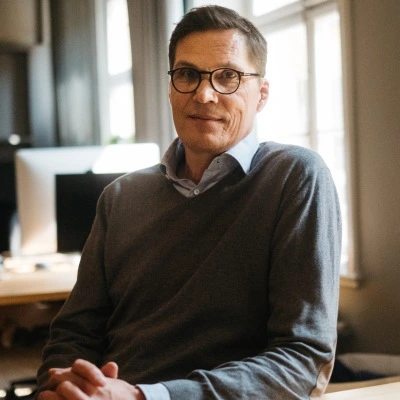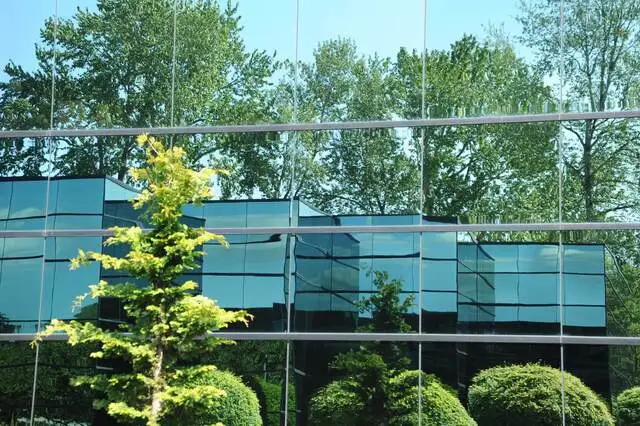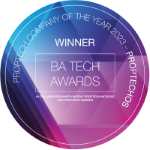Environmental protection efforts are constantly jeopardized by increasing carbon emissions, plastic trash production, and underdeveloped infrastructure systems. As most of today’s infrastructure designs are haphazard, planned out sustainable new construction is essential to finding a solution to these issues.
To help solve these environmental issues, the U.S. Green Building Council created the Leadership in Energy and Environmental Design (LEED) certificate.
What is the LEED Certificate?
The Leadership in Energy and Environmental Design – LEED certificate – is a green building rating system that has widespread adoption worldwide. LEED offers a foundation for healthy, highly effective, cost-effective green buildings and is available for almost all building types.
Ultimately, a LEED certificate signifies leadership and excellence in the field of sustainable development that is recognized all over the world.
Four Levels of LEED
A LEED certification comes with various benefits, from healthier buildings to those that conserve resources and money. The degree of a project’s LEED certification depends on the points it receives. Notably, there are four certification levels:
- Certified: 40–49 points
- Silver: 50–59 points
- Gold: 60–79 points
- Platinum: 80+ points
How to Get Your LEED Certificate
Projects must meet specific qualifications and obtain a minimum number of points in each category to receive LEED certification.
The first step is to decide which rating system fits your project best. Currently, there are six rating systems:
- Building Design and Construction
- Cities and Communities
- Interior Design and Construction
- Operations and Maintenance
- Residential
- Recertification
The next step is to assess the requirements for each category and decide how many points you can effectively earn. Categories consist of:
- Energy and Atmosphere
- Indoor Environmental Quality
- Innovation
- Location and Transportation
- Materials and Resources
- Sustainable Sites
- Water Efficiency
Your project’s overall value will increase proportionately to the number of points you earn and will get totaled at the end. Then, your building’s total score will determine if your project is Certified, Silver, Gold, or Platinum.
Who Would Benefit From the Certificate?
Although LEED is a voluntary program, earning a certification would benefit stakeholders such as owners, occupants, tenants, and the environment.
Building Owners
LEED certification will improve a building’s reputation and position its owners as pioneers in green construction. Building owners can charge higher lease rates because sustainable buildings are more valuable in the current market. Knight Frank’s latest report states that green buildings are adding a premium to the sales price.
Building Tenants and Occupants
The comfort and health of building occupants are supported by green building benchmarks such as:
- Thermal comfort
- Indoor air quality
- Interior lightning
Green buildings equate to more productive spaces for office building management. Additionally, LEED certification is crucial for cultivating an indoor environment that supports better air quality and occupant health in healthcare and educational facilities.
The Environment
As the core of this initiative, LEED-certified buildings lessen environmental stress. Data-driven real estate organizations use resources and energy more effectively while requiring less operational maintenance and producing less waste.
Benefits of Getting a LEED Certificate
There are numerous advantages to earning a LEED certification, including the following:
- Champions health
- Promotes productivity
- Saves money
Champions Health
LEED-certified buildings demonstrate a higher indoor air quality than non-certified ones. However, this is made significantly possible by the installation of unique green HVAC systems supported by antimicrobial and anti-allergy filters that enable them to supply pure air quality continuously.
As a result, you can reduce the danger of diseases, pollution, and other environmental issues.
Promotes Productivity
In addition to sustainable structures, a better workforce also gets promoted by LEED Certification. Studies show that people working in LEED-certified buildings significantly increased their general health and requested fewer sick days. Employee productivity increased as a result, and they were more dedicated to finishing projects on schedule.
Saves Money
One of the nicest things about LEED-certified buildings is that they contribute to a healthy reduction in utility bills and operating costs. That is made feasible through conservation, saving large sums of money for next, more crucial jobs. According to a Harvard study, Leadership in energy and environmental design certified buildings had 10.1 percent lower operating expenses.
Are there any cons?
Although LEED Certification may be advantageous for the environment, it has several disadvantages, the most significant of which is that it is expensive.
The LEED certification is not simple to obtain as it requires high upfront costs.
The registration fee can range from $750 to $3750. Additionally, there are differences between the costs of certification and other items. For many, that may round up to $10,000. However, these are merely the participation costs. The reasonable prices, such as building with environmentally-friendly materials and hiring the necessary employees, must also be considered.
Due to this, many small, sustainable enterprises that had initially adopted this certification had to abandon it eventually.
Conclusion
As the value of sustainability increases, LEED certification is one of the most sought-after certifications by building occupants. While the certification may pose sizable upfront costs, the benefits of getting LEED-certified far outweigh them in the long run.
ProptechOS and Vasakronan
In 2019 Vasakronan, ProptechOS, and ARC (U.S. Green Building Council) worked together to make it possible to automate the LEED-certification process fully. Certify, a new app, was developed using RealEstateCore and ProptechOS, and a pilot batch of 29 buildings was successfully certified. If you can automate the process, additional benefits will increase your cost savings and environmental footprint.
How to generate automated LEED certifications
Today, operators must go out and manually read the sensor data from each building. Still, there is a new solution that allows the data to be gathered in real-time and used for more than certification but also optimization. ProptechOS analyses and collates all the sensor data, allowing an Automated Leed Certification, thereby vastly reducing the number of person-hours required to complete the LEED certification and the risk of human error.
ProptechOS and ARC make it possible to automate the LEED-certification process fully. Building automation, IoT, energy collection, and administrative systems act together and integrate smoothly using RealEstateCore and ProptechOS.
What is ARC? ARC – benchmarking your data
ARC is a digital platform that uses data to help measure and improve sustainability performance across the built environment, from buildings. ARC’s data-centric approach connects actions and tracks progress through a performance score that allows projects to track and benchmark progress.
ARC is the first to track sustainability progress through a performance score to help drive continuous and incremental improvement. ARC scores create a holistic picture of the results of sustainability efforts at the building, portfolios, and community levels. Through the initial step of tracking data, ARC gives any project a primary entry point to the world of performance measurement and certification, no matter where they are on their sustainability journey.

Dr. Erik Wallin
Chief Ecosystem Officer, and founder of ProptechOS and RealEstateCore is recognized as a leader in Building Operating Systems (BOS) and making the buildings of the world smarter. He holds an MSc and a Ph.D. in Media and Computer Science from KTH Royal Institute of Technology.
Read his full bio and information here.

